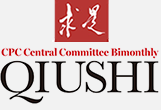Ningxia's arid plains yield vintage prosperity

People visit the Global Wineries Exhibition during the Fifth China (Ningxia) International Wine Culture and Tourism Expo in Yinchuan, northwest China's Ningxia Hui autonomous region, June 9, 2025. [Photo by Yuan Hongyan/People's Daily Online]
On a sunlit terrace at the Chateau Huida Sunshine, nestled in Hongsibu district of Wuzhong, northwest China's Ningxia Hui autonomous region, Li Cai surveyed rows of lush grapevines stretching toward the horizon. The scene stood in stark contrast to the desolate gravel desert when he first arrived in 1999. "What began as merely a means of subsistence has truly become a path to prosperity," he reflected.
Back then, winemaking along the eastern slopes of the Helan Mountain was in its nascent stages. Scattered vineyards yielded grapes only for local consumption, with farmers earning less than 1,000 yuan ($139.56) per mu (approximately 15,000 yuan per hectare).
Today, the once-desolate land has been transformed into a vibrant winemaking hub. Li's own journey - from a ditch-digging laborer to chief winemaker at his winery - parallels Ningxia's remarkable emergence as a wine-producing region.
Once a bold experiment in desert cultivation, Ningxia's wine industry has matured into a globally recognized enterprise. The autonomous region now hosts 606,000 mu of wine grape vineyards, producing 140 million bottles annually with a total output value of 45 billion yuan. The industry has created nearly 130,000 jobs for local farmers and contributed 1.22 billion yuan in wages.

The 2024 National Vocational Skills Competition for Winemakers is held in Yinchuan, northwest China's Ningxia Hui autonomous region, August 8, 2024. [Photo by Yuan Hongyan/People's Daily Online]
Recognition increasingly comes from discerning international markets. Recently, Xige Estate situated in the Gezi Mountain growing area, Qingtongxia city, about 90 kilometers north of Hongsibu, welcomed a group of special visitors.
Among them was French wine merchant Durand Fisher from Bordeaux. During the visit, Durand added a new release from the Ningxia winery to his portfolio.
"This competes squarely in Europe's premium market," affirmed Durand, noting that his appreciation extended beyond the vintage itself to the burgeoning reputation of wines from the eastern foothills of the Helan Mountain.
"We've established nearly 100 detailed standards, from soil pH and grape brix levels at harvest to oak-aging durations," explained Mu Haibin, head of the technical services office of the Helan Mountain east foothill wine industry park. "Many vineyards now hold EU organic certification, unlocking global markets."
In recent years, Ningxia has been working to promote the wines produced from the eastern foothills of the Helan Mountain as a regional brand, encouraging local wineries to participate in domestic and international wine competitions and exhibitions to raise their global recognition. So far, the region has earned over 1,800 international awards across more than 60 wineries.
"Wine shouldn't be confined to fancy glasses and formal dinners. It should become a part of everyday life," said Liao Zusong, Xige Estate's chief winemaker. On an e-commerce platform, he held up a can from the estate's hit product line - "Xiao Zhuo," a casual wine series designed for social media-savvy consumers. "It's a hit online, perfect for binge-watching, barbecues, or camping."
Xige Estate, located near the ruins of the Great Wall built in the Ming Dynasty (1368-1644), has become a tourist hotspot after featuring in a popular TV drama. The winemakers have seized the opportunity, rolling out immersive wine tourism experiences blending tradition with trend. Visitors can cycle through the vineyards, try their hand in the winemaking process, design their own wine labels, and even camp under the stars with curated food-and-wine pairings - an all-around celebration of wine culture.

Agricultural machines work in a wine grape plantation at the eastern foothills of the Helan Mountain in northwest China's Ningxia Hui autonomous region, March 19, 2025. [Photo by Yuan Hongyan/People's Daily Online]
Ningxia now boasts 22 certified wineries at AA-level or above, attracting over 3 million tourists last year. Winery tourism has become a major driver of local wine sales.
In the vineyards of Haoyuan village in Xixia district, Yinchuan, capital of Ningxia, grape grower Zhang Shengjie checked real-time soil moisture and light conditions on a mobile application. "Now I can manage watering and fertilizing with just a few taps. Smart farming really improves grape quality," he said. "Last year, I earned an extra 0.3 yuan per kilogram."
This transition from labor-intensive to technology-driven agriculture has attracted 19 wineries to establish operations in the village. With over 10,000 mu of wine grapes, the village produced 6,000 tons of wine last year, with total output nearing 400 million yuan. A digital service platform for the industry is expected to go online by the end of the year.
"Each bottle will soon carry a digital identity," said Xie Chunmei, associate professor at Ningxia Technical College of Wine and Desertification Prevention. "Scan its QR code reveals the entire journey - from the vineyard to fermentation temperatures and barrel aging."
Early trials show impressive results: average grape sugar content has climbed to 25.7 percent, matching premium winemaking standards. Yields per mu increased from 600 to 800 kilograms, while water usage has dropped by 30 percent.
Ningxia is also promoting the integration of wine culture and tourism. With new experiences like "wine + camping" and "wine + music festivals," the vineyards and characteristic wineries at the foot of the Helan Mountain are becoming unique local assets that revitalize nearby townships and counties.


























